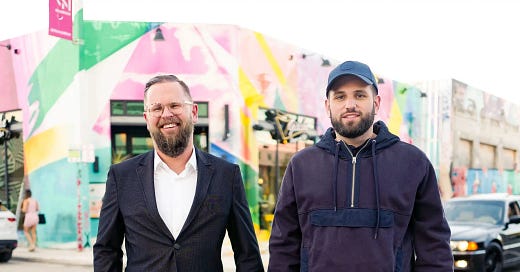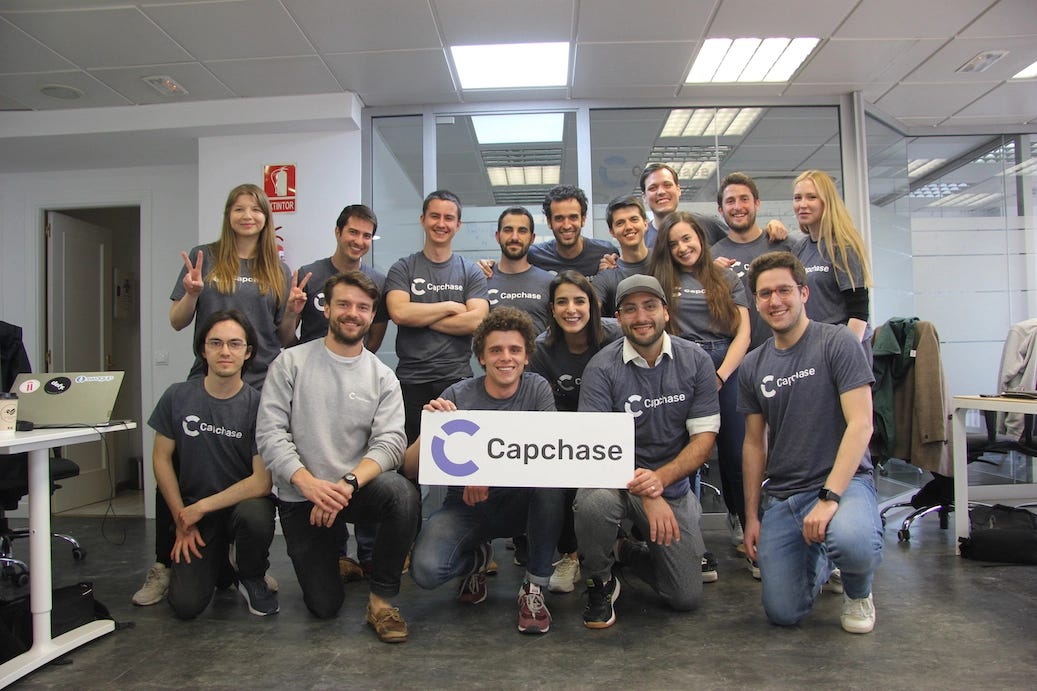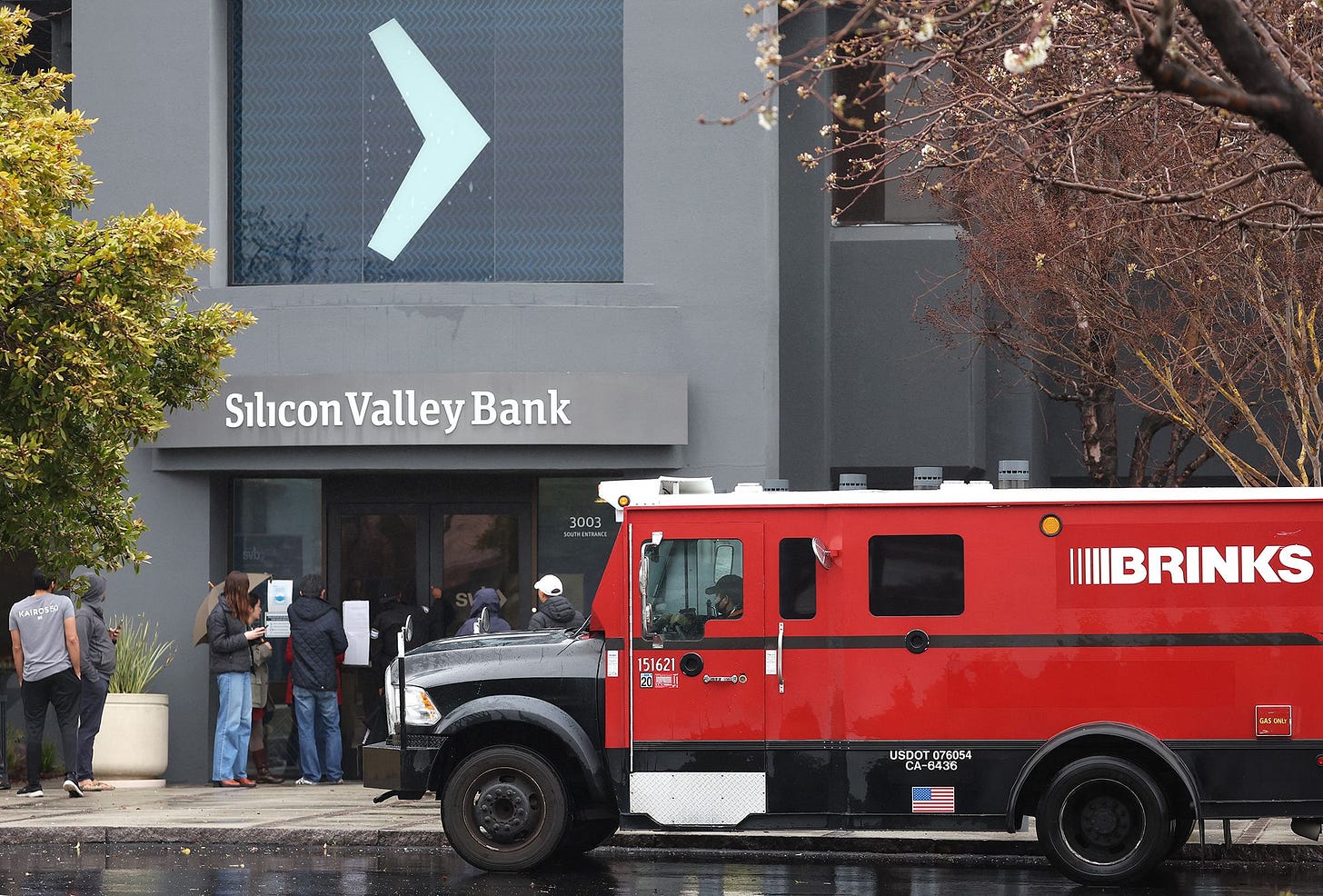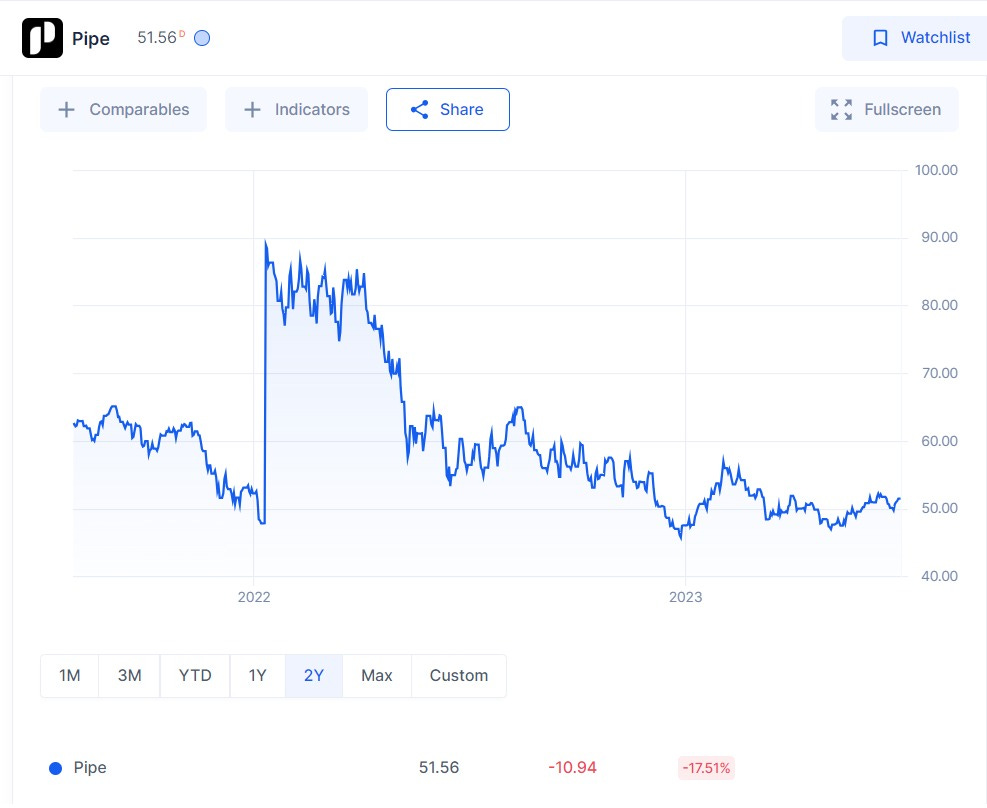Pipe's $2Bn Pipe Dream, Founder's Exit, & SVB Collapse
Pipe, the revenue-based funding provider's new CEO who is building a "FinTech Dream Team" after the abrupt resignation of founding team. Will this be enough to weather the storm of current downturn?
Editor’s Note: Thank you to 40 new people who decided to subscribe to our newsletter, including execs from Insight Partners, Plaid, and Boston Consulting Group. Term Sheet Digest is a weekly newsletter for the Attack Capital community. If you are in the mood to read about private company stocks that are heating up in the secondary market and the biggest news around Silicon Valley, you are in the right place.
Pipe is building an entirely new asset class based on recurring revenue, it lets businesses raise money by selling their future cash flows directly through its platform.
Pipe, a Los Angeles, California-based company, was founded by Harry Hurst, Josh Mangel, and Zain Allarakhia in 2019, their SaaS platform was launched in February 2020.
The company is backed by top-notch individual investors like Naval Ravikant, and Marc Benioff, top venture firms like Morgan Stanley, and Alexis Ohanian’s Seven Seven Six, as well companies like Shopify, Slack, Okta and Hubspot.
In May2023, the company had 22,000 customers on its book, mostly SaaS business, but recently it also started focusing on D2C, and media businesses to grow its user base.
Founder’s Exit & Secondary Share Sales
Pipe, at the end of last year, found itself without all three founding members in just a matter of 24 hours. The founding team resigned abruptly, quoting a lack of experience in scaling the venture.
Usually, when such transitions from founders to experienced leadership take place in a startup, the candidates to replace them have already signed the offers to come on board. But, in the case of Pipe, the search began after the resignation of the founding team.
According to TechCrunch, the real reason behind the abrupt resignations was the excessive amount of capital they took out of the company through secondary share sales. Venture investors also raised questions regarding their bad loans to crypto companies and their underwriting practices without proper due diligence.
But, during the boom years since 2020, there was a larger trend in the startup ecosystem globally, where founders were taking out massive secondaries.
Pipe’s Revenue and Growth
Pipe is currently valued at $2 Billion and raised $250 Million in their Late VC round in May 2021, after their Series C. The founder and CEO, Harry Hurst, in their last interview in November 2022, told Tech Crunch that the company is well-capitalized and has a runway for the next 5 years. The company has raised $316 Million to date.
The company in 2021 showed an extreme growth rate of 600% over their 2020’s business metrics, the revenue that year was estimated to stand at $15 Million. The company’s growth and revenue showed a sharp decline the next year, with the growth rate dropping to 50% and revenues to $23 Million.
One of the major reasons for the decline in growth rate was multiple revenue-based financing fintechs crowding the market, plus the rising interest rates and a slowdown in the VC ecosystem aren’t helping either.
Product, Tailwinds, and Rising Competition
Pipe works by asking companies making a minimum of $100K ARR to connect their bank account, payment processor, and accounting software to Pipe for free. It analyzes the cash flows, contracts, new logos, etc., and algorithmically assigns a rating to the quality of their revenue.
The growth of the subscription-based economy, low-interest rates, and improvement in fintech infrastructure over the last couple of years gave rise to an environment in which Pipe can flourish.
Well, low-interest rates made the whole Venture and Startup ecosystem flourish for more than a decade, and the subscription-based economy made predicting the future revenues of companies, mainly SaaS, very easy.
While improvements in Fintech infrastructure due to the companies such as Marqeta (card-issuing), Plaid (banks API), and Stripe (payments) made it possible for SaaS companies to embed inside their customers’ payments and accounting workflows.
These fintech-in-a-box companies also make it easy to pull a company’s financial history through APIs, leading to a mushrooming of modern revenue-based financing startups, differentiating just by adding incremental services.
Pipe is composed of three interconnected parts: An origination and servicing platform where sellers connect their software and that services the investors by remitting monthly payouts, a rating platform that signals how good the company is, and a trading exchange for selling/buying the revenues streams.
The competition in the revenue-based financing space is tough, with companies providing similar services with some slight add-ons or variations in the product. Capchase, Pipe’s closest competitor (raised $950M), buys the future revenue in-house without the marketplace model, and Founderpath ($161M) offers a longer payback period of 24 months.
Unlike Pipe, these companies are not marketplaces and purchase the future contract themselves. Arc (raised $181M), another revenue-based financing solution, provides additional banking services. The company also competes with B2B BNPL solutions from Ramp and Balance that let businesses pay for purchases in 30 to 60 days for a fee.
The Collapse of SVB and Opportunity for Pipe
Since the Silicon Valley Bank Collapsed, the FinTech space in the ecosystem has found itself competing to fill the spaces left open by the SVB. Not just in banking, Silicon Valley Bank was the leader and a trusted name in most of the banking and investment products for startups.
Mercury and Brex are already head-to-head competing to become the next “startup bank,” but when it comes to other products like Venture Debt, there is still a massive opportunity left open.
Pipe already has a perfect solution to provide companies with an alternate solution to equity and debt, and due to low competition from any incumbent like SVB, the opportunity to grow 10X in the next couple of years is possible, provided other competing companies like Capchase, Founderpath, and Arc don’t cannibalize each other’s revenues while chasing growth.
The company can also layer more financial services its customers need to grow, such as checking/saving accounts, corporate cards, virtual cards, ACH/wire, expense management, and Forex support. There are already well-capitalized companies in these markets, like Brex, and Ramp, so it doesn’t look likely that Pipe would prefer to go this way, but it’s an option nonetheless. Spinning off its core tech as an API to other companies is another option, especially vertical SaaS, to assess customers' business quality and extend financing.
Secondary Market Performance
Pipe was an instant hit after it raised seed from Naval Ravikant, by the time it came to raising money for its Series C, Lachy Groom, Chamath Palihapitiya, and Marc Benioff also joined the list of individuals among many silicon valley insiders backing the company.
Its brand also comes from the fact that companies like Slack, Okta, Hubspot, and Shopify have also decided to back the company from their balance sheet. Morgan Stanley, Alexis Ohanian’s Seven Seven Six, and Craft Ventures are among the big names in its Captable to lend them their brand.
The company, compared to other FinTechs in the sectors, has raised money conservatively and built a strong business foundation with a small headcount, in his last interview, the founder and CEO said that the company has a runway of five years.
In the secondary market, the stock is hot but lost a lot of its value compared to its early 2022 peak. The reason for the decline is first the shift in the macro environment, the company’s competitors have also started eating some of its business. The recent troubles with the founder’s exit were also enough to push some investors to sell their holdings earlier than expected.
New Management, and FinTech Dream Team
To fill the void left by the abrupt resignation of the founding team late last year, the search for new CEO was finally over when Luke Voiles, a FinTech veteran, decided to join the company in May this year.
Voiles joins Pipe from Square, where he served as general manager of Square Banking, he was responsible for scaling and managing Square Loans, instant transfer, Square Checking, and Square Savings globally.
Prior to Square, he held roles at Intuit, including CEO and president of QuickBooks Capital, building out the lending business and scaling it to $2 billion in loans originated.
Voiles, as soon as he was announced, got to work on assembling a “FinTech Dream Team.” He brought Scott Polchleb together from Square, he will serve as Chief Innovation Officer, Polchleb was previously the global head of design and creative at Square Banking. He also held senior leadership positions in design at Afterpay, WeWork, and Visa.
Namrata Ganatra will be the new Chief Product and Technology Officer. Prior to joining Pipe, she led engineering and product at NFT platform Autograph. She also held senior roles at Coinbase, Meta, and PayPal.
Manpreet Dhot will be the new Chief Risk Officer of Pipe. Dhot, who has over 20 years of experience in commercial and consumer risk management, moves from credit card issuer Imprint, where he was CRO. He also held the CRO role at Funding Circle US, where his credit and fraud risk strategy enabled the lender’s US portfolio to grow from $80 million to $1.1 billion in assets under management in five years with no adverse credit outcomes.
Yasmin Moaven is the only Pipe veteran who will be a part of the new dream team. She previously served as the Chief Marketing Officer in the company, she will expand her role to include Chief Operating Officer.
Pipe is at an interesting crossroads, the company’s product is a hit, they have enough money, traction, and product-market-fit for a 3-year-old company but didn’t have the full support of the founding team, allegedly.
But now, due to the new and experienced management, they at least have a great chance to build their product to test out its full potential. Competition is rising, but due to the new management, the company is also fired up to compete and win, only time will tell what the future holds, but the events of the last couple of weeks were nothing but a great sign for the bright future of the company.
Top Stories
Google Assistant reportedly pivoting to generative AI. According to an internal email, the Assistant team leads “see a huge opportunity to explore what a supercharged Assistant, powered by the latest LLM technology, would look like” and describe some organizational changes to achieve that.
Vanguard cut the worth of its shares in Indian ride-hailing company Ola by 51.6%. The asset manager marked down the holding of its Ola shares to $25 million from the $51.7 million purchase price years ago.
NATO announces $1B fund to back startups supporting ‘safety, freedom, and human empowerment.’ Member nations are collectively committing capital totaling €1 billion (around $1 billion at current rates) to the NATO Innovation Fund, which plans to make both direct and indirect investments in startups.














This is a very interesting read and follow-up from the founders' exit which I had the opportunity to follow when the news broke out. I personally like this revenue-based financing business model and I am always of the opinion with the current macro-economic conditions, businesses are bound to start looking at innovative and productive ways to keep expenditure heads at a minimum while still reaping their positive effects. I will be on the look out to get insights on hires needed to successfully implement pipe's business model.